Mold growth may not always be visible and can grow undetected.
As mold digests its food, certain chemicals called mold volatile organic compounds (MVOCs) are produced. Whether or not you're allergic to molds, prolonged exposure to these MVOCs can have serious health effects, especially in infants, small children, the elderly and anyone with chemical sensitivities or chronic respiratory conditions like asthma or allergies. Mold, like any other living organism, has to eat, drink, and breathe to live. WE CAN IDENTIFY FOREIGN ODORS AND THEIR SOURCES. IF YOU HAVE A COUGH, SNEEZE OR ANY ALLERGIC SYMPTOMS, CALL US TO HELP! THE TERM "MUSTY" MEANS MOLD IS PRESENT. WHERE OTHER TESTS FALL SHORT, WE PROVIDE PROVEN RESULTS! *Real estate professionals: in most cases, results are available in one day.
There are many areas in every home where mold growth can be hiding.
A professional mold inspection can help you identify those areas where mold is actively growing in your home. Mold inspections will often reveal multiple areas of mold contamination, which effectively have a cumulative effect equal to that of a very large area. These inspections are performed for individuals suffering from health problems believed to be related to poor indoor air quality, as well as during real estate transactions and litigation between buyers & sellers, tenants & landlords, or claimants & insurance companies. Because indoor mold is a direct cause of so many health problems, a mold inspection is a wise investment for everyone, not just those who are already suffering symptoms.

Common Types of Mold
ACREMONIUM
Acremonium mold is a toxigenic mold type that evolves in its appearance over time. It first starts out as a small moist mold that turns into a fine powdery substance. Acremonium mold is often pink, grey, orange or white in color. Acremonium typically grows in household systems and areas such as condensation from humidifiers, cooling coils, drain pans and window sealants.
Exposure to acremonium is very dangerous and it can lead to disease in the bone marrow, immune system and other organs. Because it is a carcinogen, it can also impair brain function. Acremonium is sometimes known to grow with other types of mold including strachybotrys, which creates a particularly unpleasant and dangerous mold problem in homes.
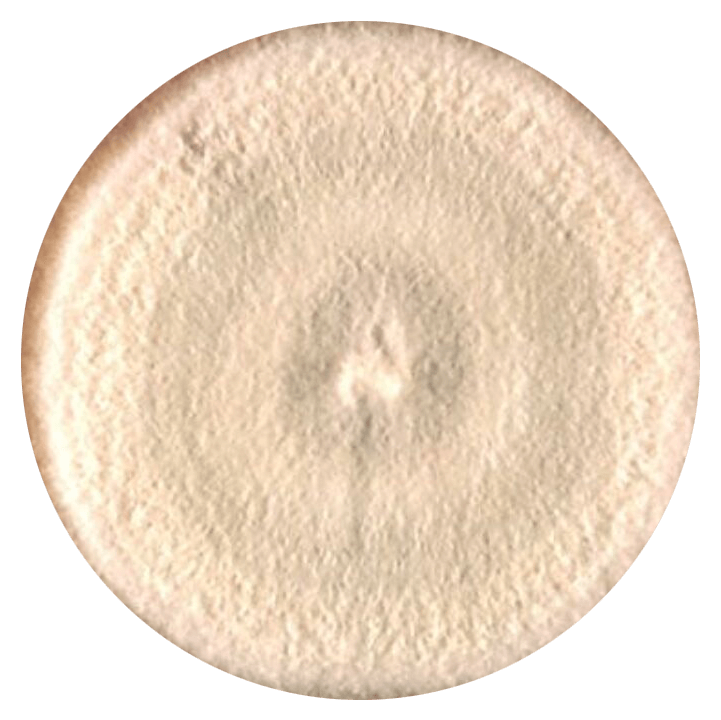
ALTERNARIA
Alternaria is the most common form of allergenic mold in the world. It’s a velvet-textured mold with dark green or brown hairs. It typically grows wherever dampness occurs. In homes, this is common in showers, bathtubs, and below leaking sinks. Alternaria is also a common mold species that appears as a result of water damage to a home or building.
As an allergenic mold, alternaria causes asthma-like symptoms including in the upper respiratory tract, nose and mouth. Because it spreads quickly, it’s important to remediate alternaria mold immediately before it overtakes a home.
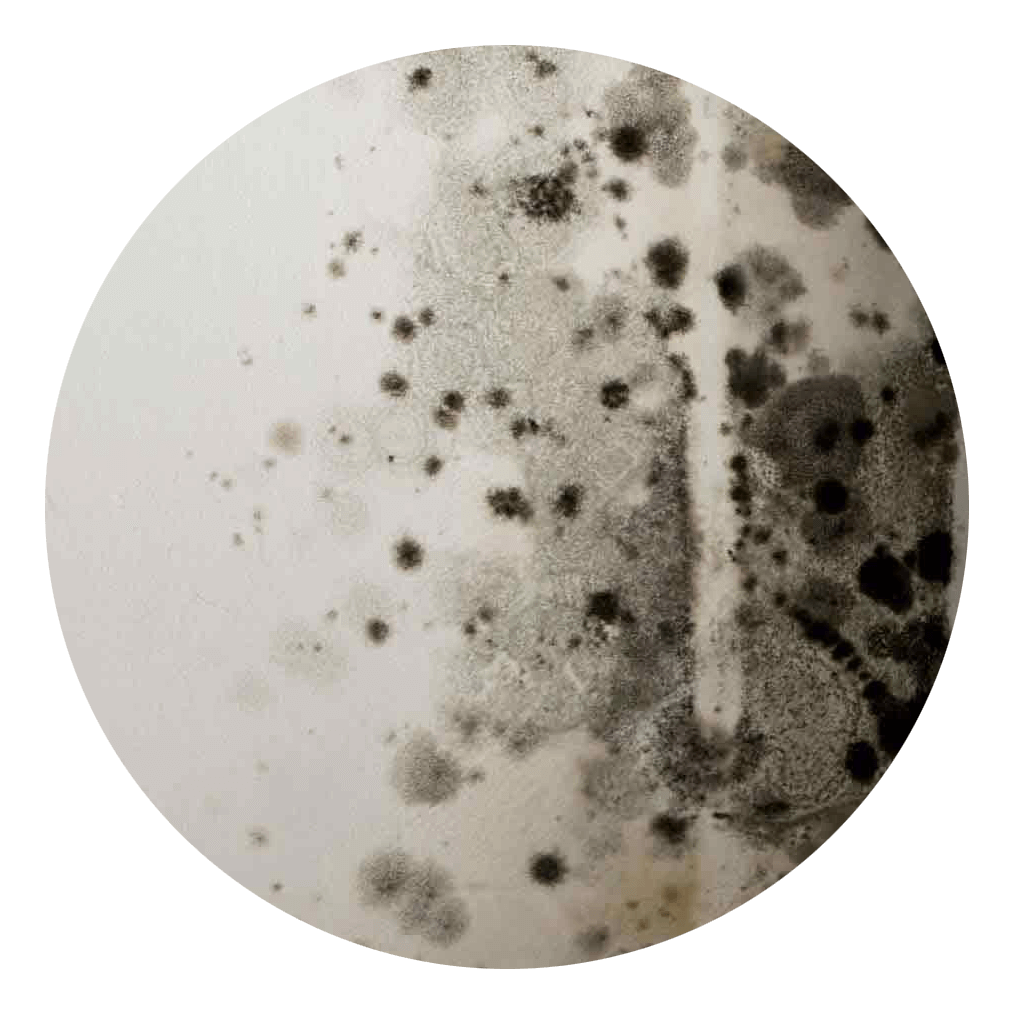
ASPERGILLUS
Aspergillus is a common mold found in American households. It has long flask-shaped spores that can form thick layers or walls of the mold. This creates long chains of mold growth on surfaces. Because there are over 185 species of aspergillus mold, it can appear in many different colors.
Aspergillus is an allergenic mold but is also capable of becoming more toxic, depending on the species and the environment affected. It can lead to symptoms such as asthma attacks, lung infections, and respiratory inflammation. Certain aspergillus mold species are capable of producing aflatoxins, a known and deadly carcinogen.

AUREOBASIDIUM
Aureobasidium is an allergenic mold that can sometimes be found growing behind wallpaper or on painted or wooden surfaces. Aureobasidium usually develops in pink, brown or black color. As it ages, aureobasidium typically turns a darker brown color.
The primary health risk of aureobasidium is its ability to cause infections of eye, skin, and nails. Because of its potential to cause dermatitis (skin rash), it should never be touched directly with bare skin.

CHAETOMIUM
Chaetomium is a mold commonly found in water-damaged homes and buildings. Chaetomium has a cotton-like texture and usually changes colors from white to grey to brown and eventually to black over time. Chaetomium mold is usually found in a damp or leaking roof, basement or sink and may be recognizable by its musty odor.
Chaetomium mold causes health effects such as skin and nail infections. In some cases, it can produce mycotoxins that are especially dangerous in individuals with compromised immune systems. Because it grows in chronically moist conditions, it is important to repair the cause of water damage in your home. This means you need to be aware of where to find it. Chaetomium mold can grow in places such as your roof, basement foundation or leaky pipes. Cutting off the moisture problem at the source will prevent this mold type from returning repeatedly.
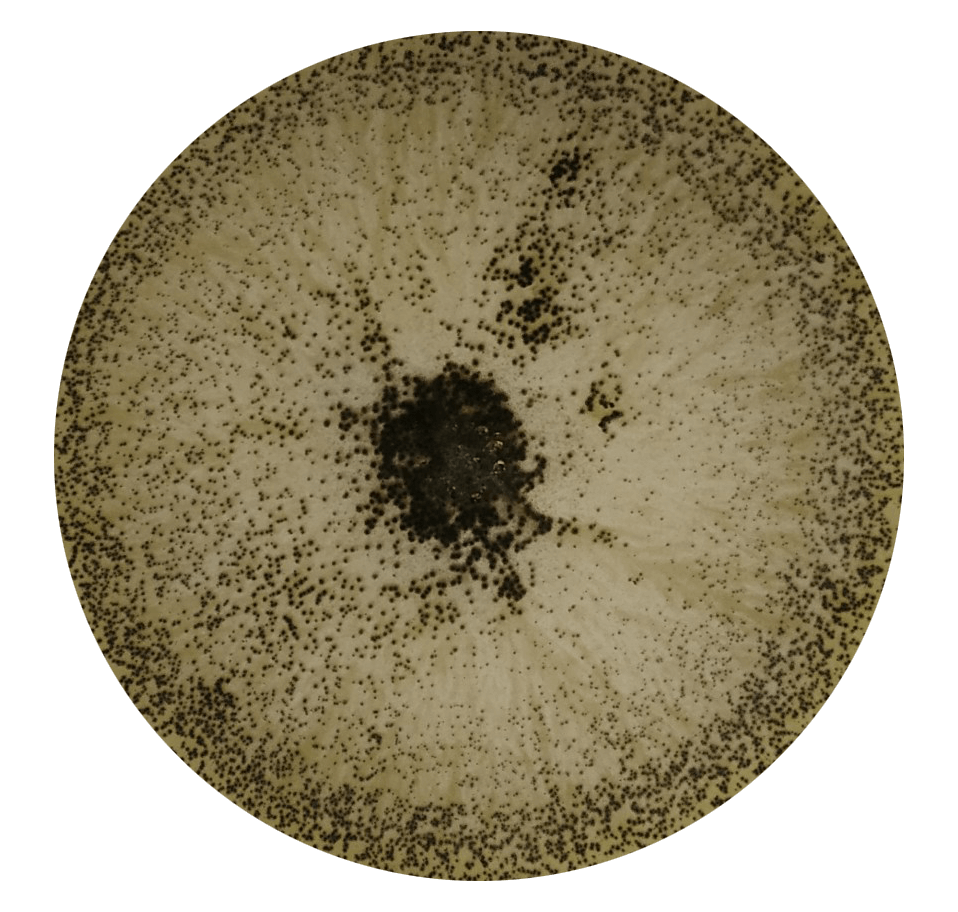
CLADOSPORIUM
Cladosporium is an allergenic mold type. It is unique in that it can grow in both warm and cold conditions. It is often found thriving in indoor materials such as fabrics, upholsteries and carpets. It also presents itself under floorboards and inside cupboards. Cladosporium is an olive-green or brown colored mold with a suede-like texture.
Cladosporium typically causes allergic reactions to the eyes, nose, throat and skin. Exposure to cladosporium causes skin rash and lesions, asthma, lung infections and sinusitis. While not considered to have toxic properties, cladosporium should not be handled directly due to its potential for causing skin and lung irritation.

FUSARIUM
Like cladosporium, fusarium is another mold capable of growing and spreading even at colder temperatures. It is both an allergenic and a toxigenic type of mold that grows in homes with water damage. Typically, fusarium will grow in carpeting, wallpaper and other fabrics and materials. Fusarium mold is often pink, white or reddish in color and naturally grows on food products and in compost.
Exposure to fusarium can cause skin infections as well as allergic reaction symptoms such as sore throat, running nose, sneezing, itchy eyes and dermatitis. Prolonged exposure to fusarium can cause other severe and life-threatening conditions such as bone infections or brain abscess. Fusarium can produce toxins that are damaging to the nervous system and can potentially lead to hemorrhages and internal bleeding.
Fusarium, by nature, will quickly spread from room to room. If you notice it in one area of your home, examine the rest of the home thoroughly for signs of it elsewhere.
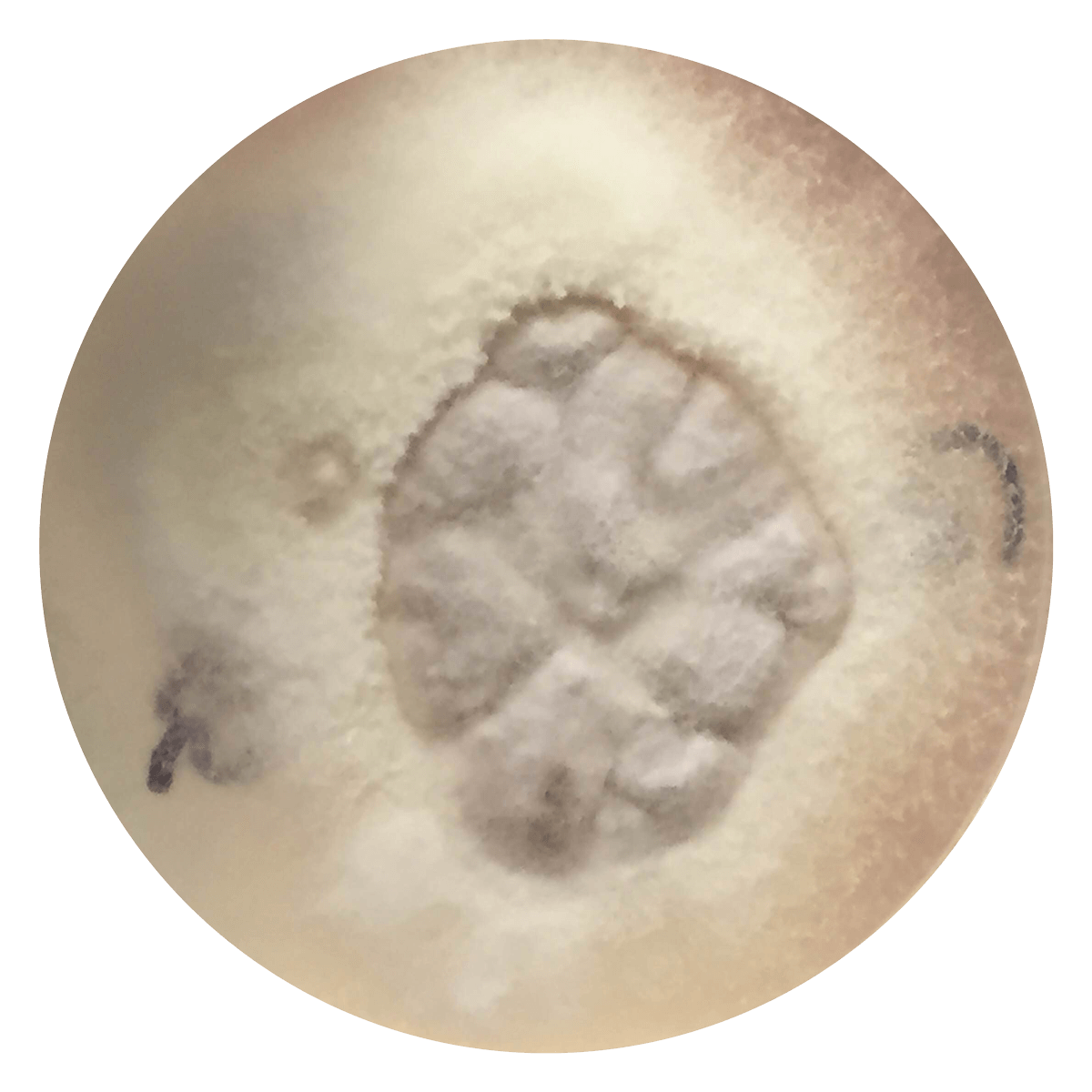
MUCOR
Mucor is an allergenic form of mold that usually grows in thick patches. It is often white or greyish in color and grows quickly. It most often grows near air conditioning, HVAC systems and ducting due to moisture from condensation. Old, damp carpets can also grow mucor spores.
Mucor causes a range of health problems particularly affecting the respiratory system. When exposed to mucor, it can cause asthma or worsen existing asthma conditions. Mucor also causes difficulty breathing and flu-like symptoms including fever and malaise.
In very severe and unfortunate cases, someone who faces prolonged exposure to mucor can develop mucormycosis. Mucormycosis is a fungal infection that can damage the sinuses, lungs and even the brain. It can also infect the eyes and nose and eventually become systemic in the blood, digestion or renal systems. For this reason, it is vitally important to contact mold remediation professional to handle the removal of mucor. Never inhale or handle mucor spores without mold remediation equipment and safety gear.
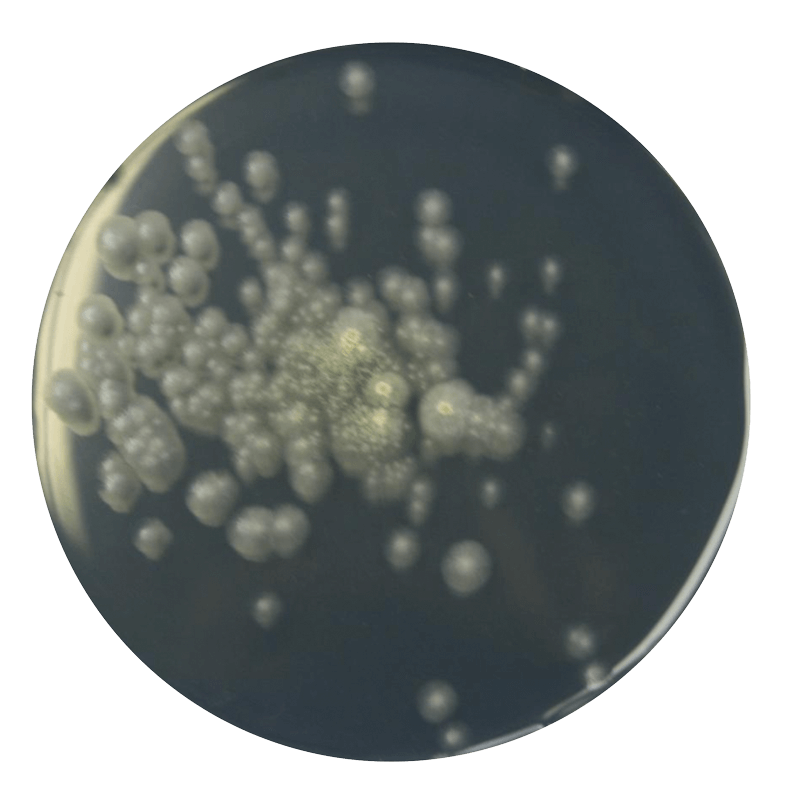
PENICILLIUM
Penicillium is an allergenic form of mold. It is easily recognizable by its characteristic blue or green colored surface with a velvety texture. Penicillium mold is often found in water-damaged homes and buildings. It is found in materials such as carpets, wallpapers, ducting and even in mattresses. It spreads quickly from one area of the home to the next.
Unfortunately, though penicillium is responsible for important antibiotic production and food processing capabilities, it is also the cause of terrible respiratory conditions when it grows indoors. Penicillium spores can easily become airborne, travel throughout the home and be inhaled by occupants such as pets and children.
Penicillium exposure can cause pulmonary inflammation and asthma. When exposed to it for a longer time it can lead to chronic sinusitis. People with immune disorders shouldn’t be exposed to penicillium as a penicillium infection can worsen symptoms and lead to further health complications.
Because penicillium mold growth is commonly associated with damp and moist areas, it is critical to remedy any household leaks or water damage as soon as possible to prevent penicillium from recurring and spreading throughout your home.
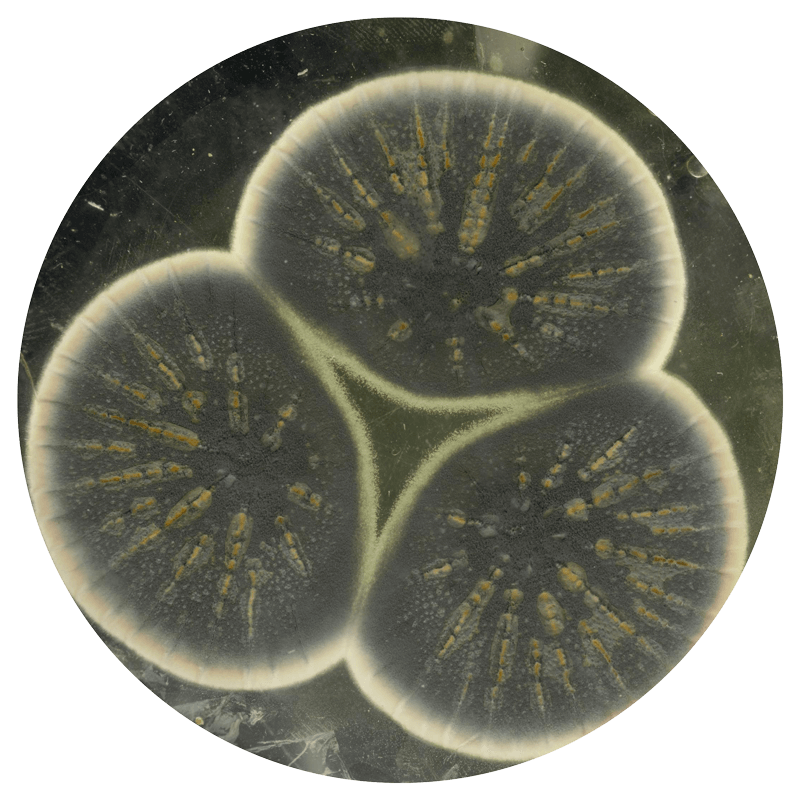
STACHYBOTRYS
Stachybotrys is also known as the nefarious “black mold.” It is a toxigenic type of mold that can also cause allergic reactions. Stachybotrys mold is dark greenish or black in color and has a slimy texture. Stachybotrys thrives in damp, wet areas with high humidity levels that maintain these environmental conditions for weeks. It is known for growing on cellulose material such as woods, cardboard, paper, hay or wicker.
Stachybotrys is sometimes called “toxic mold” because it produces mycotoxins that cause severe health problems to those who have been exposed to it. Stachybotrys exposure symptoms include difficulty breathing, sinusitis, fatigue and even depression. Dull aches and pains in the mucous membranes of the sinuses are common among sufferers of black mold exposure. If you’ve been exposed to stachybotrys you may also experience burning sensations in your airways, a tightening in the chest, persistent cough, nose bleeds, fever and painful headaches.
Stachybotrys is linked to neurological problems in children and pulmonary bleeding in infants. If you have black mold in a home with children, it is important to remove children from the home and prevent their exposure to stachybotrys. Contact a mold remediation professional immediately to help restore your home back to safety.

TRICHODERMA
Trichoderma is an allergenic mold type with five different subspecies. It’s generally white in color with green patches. Trichoderma mold colonies grow rapidly as wooly-textured clusters and then become more compact over time. It commonly grows in the home on wet surfaces including within wallpaper, carpet and other damp fabrics. It thrives in moist areas, and so you may also find it in air conditioning filters and HVAC system ducts where there is a buildup of condensation.
While most trichoderma molds are non-pathogenic, other types have been linked to pulmonary and even hepatic (liver) infections. When it produces mycotoxins, trichoderma acts similarly to stachybotrys. Trichoderma is also extremely damaging to building materials. It contains an enzyme that destroys wood and paper products as well as textiles. This leads to rot and causes these structures to crumble. A trichoderma mold infestation must be dealt with professionally to stop the destruction of building materials and prevent further health hazards.
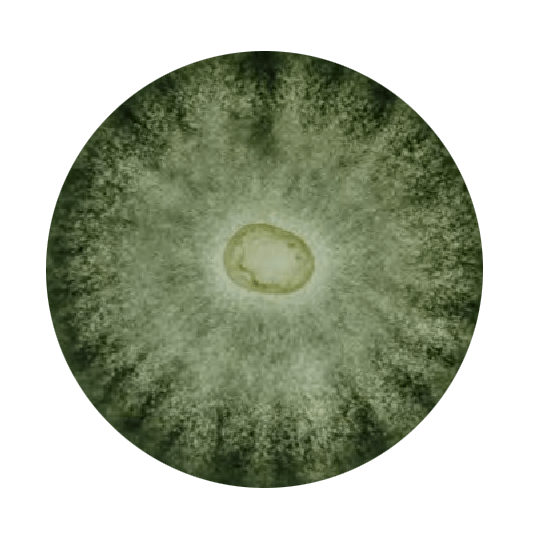
ULOCLADIUM
Ulocladium is a type of mold that thrives in wetness and water. It is usually black in color. Ulocladium is typically found in homes and buildings that have experienced extreme water damage. It can be found in kitchens, bathrooms and basements as well as around windows with high condensation levels. Ulocladium may grow in conjunction with stachybotrys, fusarium and chaetomium molds and is a good indicator of water damage.
Ulocladium has two different subspecies of molds, which can cause serious health concerns in humans. When exposed to ulocladium, people with a predisposition to allergies or immune disorders can experience severe reactions such as hay fever. Some people have even reported skin infections. General asthma-like symptoms and difficulty breathing are the most common effects of ulocladium exposure.
Ulocladium is easily confused with other types of mold, so calling in a professional is always a good idea, especially if you suspect that this mold is growing in your home.


